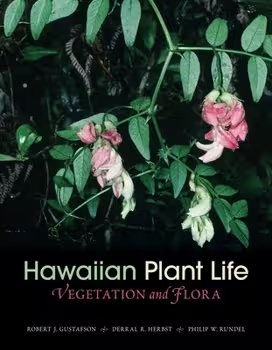Gustafson, Rundel, and Herbst’s “Hawaiian Plant Life: Vegetation and Flora” is a substantial and meticulously researched work, aiming to provide a comprehensive overview of the complex and often unique botanical landscape of the Hawaiian archipelago. It stands as a significant contribution to the botanical literature of the region, though its scope and depth may make it more suitable for serious students of botany and ecology than for casual readers.
The book’s strength lies in its breadth and scientific rigor. The authors delve into the intricacies of Hawaiian vegetation, exploring the diverse plant communities that have evolved across the islands’ varied landscapes. They examine the ecological factors that have shaped these communities, including climate, geology, and human influence.
The “Flora” component of the title is also well-addressed. The book provides detailed information on a wide range of plant species, encompassing both native and introduced varieties. The botanical descriptions are precise, often employing technical terminology, reflecting the authors’ expertise and commitment to accuracy.
However, the book’s comprehensive nature can also present certain limitations. The sheer volume of information can be overwhelming, particularly for those unfamiliar with botanical nomenclature and ecological concepts. The book is not designed for casual browsing; it requires a focused and dedicated approach to fully appreciate its depth.
The book’s organization, while logical from a scientific perspective, may not be the most user-friendly for general readers. The emphasis on ecological and taxonomic classifications can make it challenging to quickly locate specific information. A more streamlined approach, with clearer headings and subheadings, would enhance the book’s accessibility.
The book’s visual presentation is adequate but not exceptional. While the inclusion of maps, diagrams, and photographs is helpful, they often lack the vibrancy and aesthetic appeal that would truly capture the beauty and diversity of Hawaiian plant life. The emphasis is on scientific clarity rather than visual engagement.
The writing style, while authoritative and informative, is often technical and academic. It lacks the narrative flair that can transform a botanical treatise into a captivating read. It is functional and precise, but it lacks the evocative language that would inspire and engage a broader audience.
In conclusion, “Hawaiian Plant Life: Vegetation and Flora” is a significant and meticulously researched work that provides a comprehensive overview of the islands’ botanical landscape. Its breadth, scientific rigor, and detailed information make it an invaluable resource for botanists and ecologists. However, its technical density, organizational challenges, and somewhat dry presentation may limit its appeal to a general audience. While it remains a valuable contribution to the scientific literature, it is ultimately a specialized work intended for a specialized readership.





Reviews
There are no reviews yet.